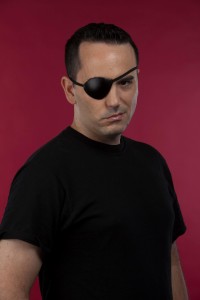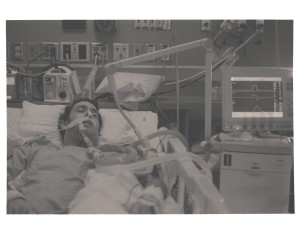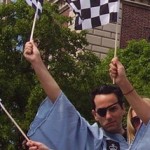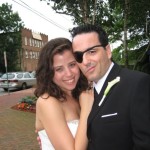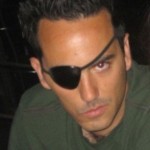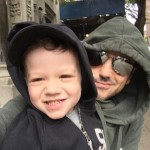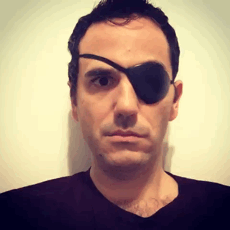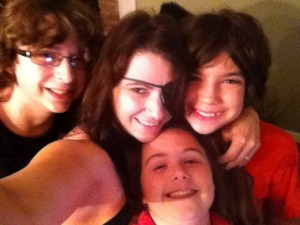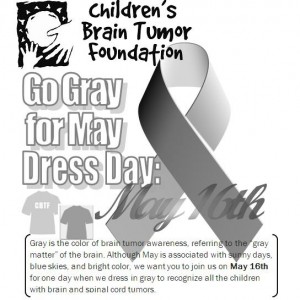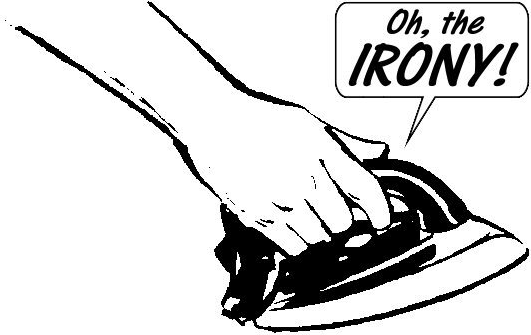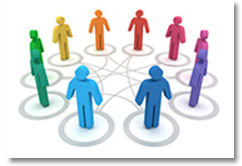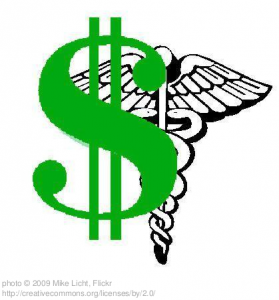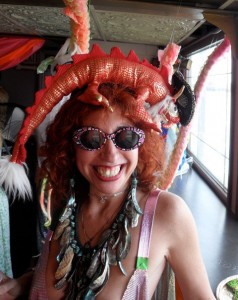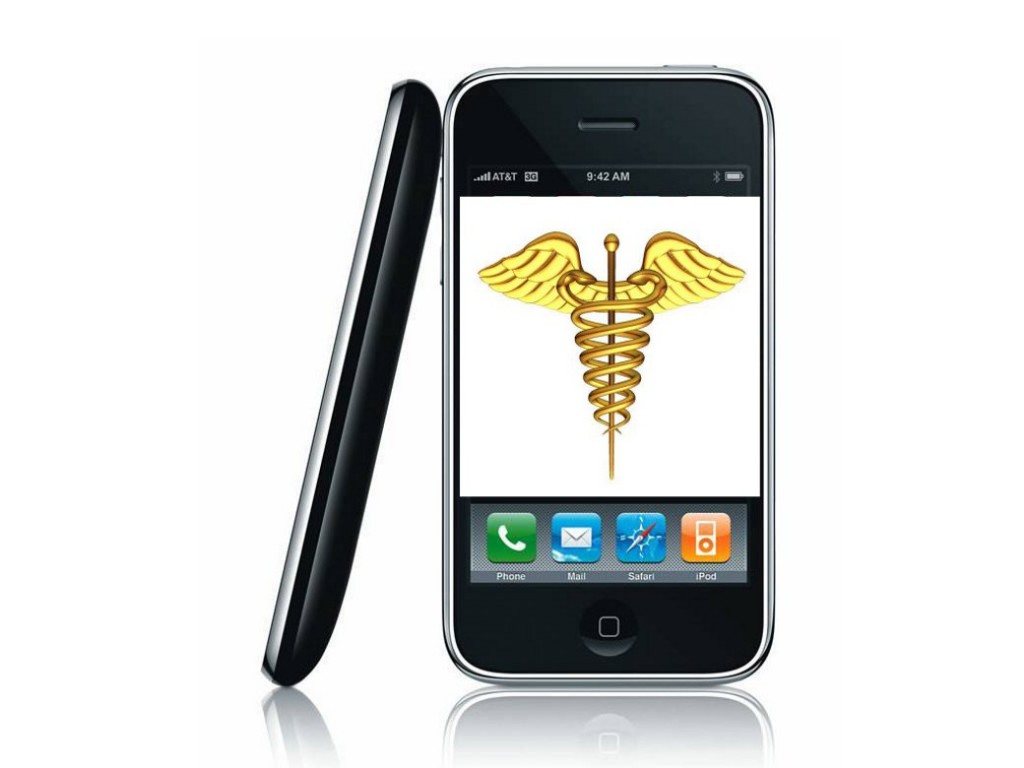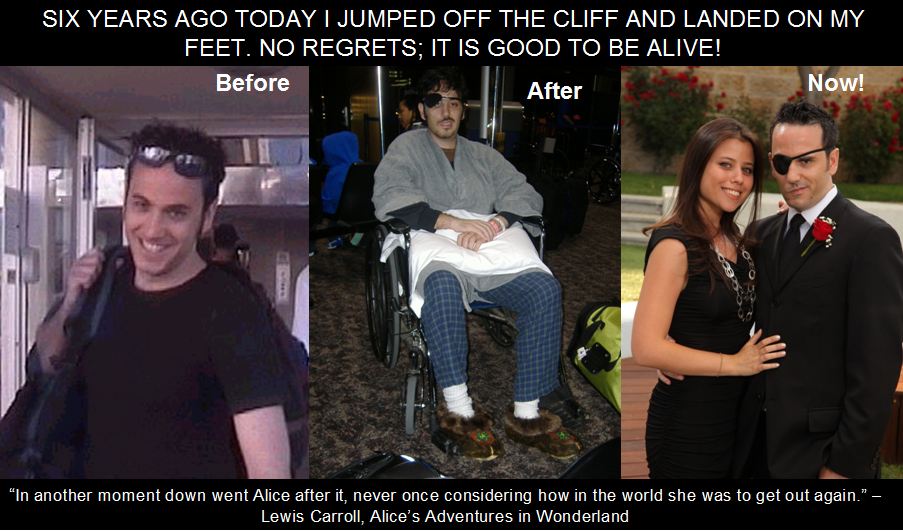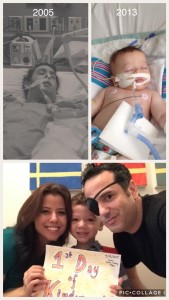 Twelve years ago today, I took a leap of faith into the abyss. Despite over 30 experts telling me that my brain tumor was “inoperable” and any surgeon that tries to remove it will most likely kill me, I decided to fly to Arizona and trust that Dr. Spetzler could save my life. Over the years I have always pondered how lucky I am to have lived. Truth is, it was not luck at all. I had spent months becoming an empowered patient while my tumor grew and pressed on the cranial nerves in my brainstem. Together with my family and close friends, I contacted dozens of doctors and experts and read countless articles about brain tumors. I made an informed decision to ignore my NY medical team and trust a larger-than-life neurosurgeon in Arizona because I truly believed, after all our research, that he could do what he said he could do.
Twelve years ago today, I took a leap of faith into the abyss. Despite over 30 experts telling me that my brain tumor was “inoperable” and any surgeon that tries to remove it will most likely kill me, I decided to fly to Arizona and trust that Dr. Spetzler could save my life. Over the years I have always pondered how lucky I am to have lived. Truth is, it was not luck at all. I had spent months becoming an empowered patient while my tumor grew and pressed on the cranial nerves in my brainstem. Together with my family and close friends, I contacted dozens of doctors and experts and read countless articles about brain tumors. I made an informed decision to ignore my NY medical team and trust a larger-than-life neurosurgeon in Arizona because I truly believed, after all our research, that he could do what he said he could do.
My journey then was mine alone. It is easier to make life-risking decisions like I needed to make when you are 25, single, and have no other choices. My family and friends were with me, but I set out on this journey on my own and my decisions only directly affected myself.
From the day I sat recovering in my hospital room, thinking about how I made my decision and was given a second chance at life, I knew that I would focus my life on helping others to become empowered patients. I truly believe that the communities I joined and the endless opinions I sought out allowed me to make and maximize the health care decisions I needed to make.
Amanda always tells me that I had my brain tumor experience as training for our son’s medical journey. In some ways, it is true. Unbeknownst to Amanda, she carried the CD40 Ligand Deficiency gene, and, regardless of who she married, her sons would have a 50-50 chance of being born with Hyper IgM Syndrome, a life-threatening and severe immune deficiency. In 2005, I lived, to find Amanda and fall in love, to be the father of Idan, to use my past experience in order to maximize our health care decisions to find him a cure. Call it fate, call it destiny, call it a series of unfortunate events, or, perhaps, call it the most fortunate of events. The journey I set in motion, the day I leaped off the cliff back on November 8th, 2005, led us to the point we are today.
Idan, our son, is doing great. The decisions Amanda and I made for him over the last four years have resulted in a true shot at a long and healthy life for our son – something we dared only dream about when he was first diagnosed. After learning all we could about Hyper IgM syndrome, we decided to travel across the country to Seattle in search of a cure for Idan. This time around we journeyed together, and our decisions were made for our son. We called upon a wide community of friends, family, and strangers, to help us along this journey with the hope to save our son. Inspired by Idan, and the amazing following his journey created, we spent the last four years working tirelessly to empower other patients and families to make the best decision they could when dealing with Hyper IgM Syndrome.
My work is far from being over. I may have been cured of my brain tumor, and Idan may be on his way to a cure from his Hyper IgM Syndrome, but so many others are in need of a cure. My wish is that you will help me continue the journey of patient empowerment.
On November 28th, Giving Tuesday, I will be calling again on all my friends to help us find a better cure for Hyper IgM Syndrome. Twelve years later my purpose is clearer than ever, and my journey is just beginning. Will you join me?

